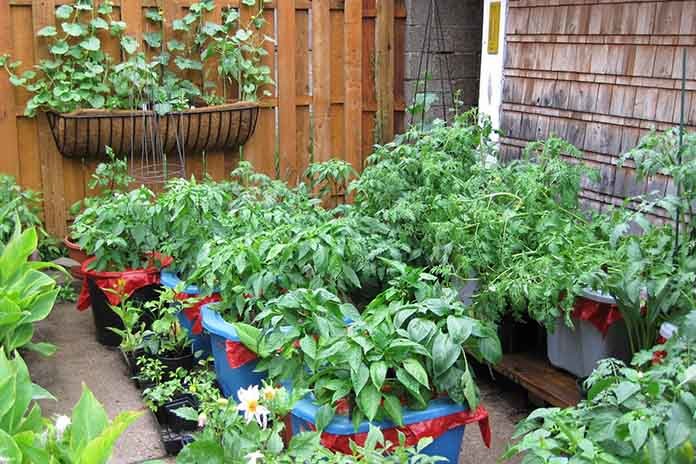
Container Vegetable Gardening – Gardening is a great stress-buster. Moreover, it can even keep you healthier. For instance, you can grow plants and vegetables that provide you fresh food every day. Plus, it is not really that difficult, especially once you get the hang of it. Container gardening is fun and interesting.
If you are planning on growing vegetables in containers, use these easy ways.
Contents
Start by Picking the Right Spot
In container vegetable gardening, plants do pretty well in spots that receive ample sunlight (at least 6 hours a day). This includes plants such as tomatoes and peppers, radishes and others. So, start by picking a spot that receives sunlight (including a windowsill). Alternatively, use artificial light.
If you live in a colder climate, keep containers near the south section of their homes. Those residing in warmer climates should set it up on cemented patio, as they get warm and provide optimal growth.
The Best Container Gardening Vegetables
For container and urban gardening, you can use a variety of plants such as tomatoes, basil, squash and zucchini, strawberries, parsley and pineapple, peppers, oregano, rosemary, spinach, chives, bananas, cucumbers, thyme and sage among others.
Container Size
You do not have to fuss about the size of the container. However, you should always try growing vegetables in pots that are large enough to the hold the plant. Always remember, the bigger it is, the better it would be to maintain and manage.
Moreover, the reason behind this is quite simple. Larger pots can hold more soil, which in turn retains moisture for longer time, thereby allowing you to water less frequently while providing more nutrients to the plant Always look for containers that are no less than 10 inches wide and 12 inches deep. For example, half barrels, window boxes, and plastic-lined bushel baskets are ideal for container vegetable garden.
Make sure that the containers come with drainage holes for letting excess water escape. In case your containers do not have one, you will need to create them yourselves. Use a drill to creating holes at their bottom and line the pot with a landscape cloth for preventing the potting mix from spilling out of the holes.
Using Support
When doing vegetables container gardening remember, that plants that are supposed to grow tall or produce vines, such as cucumbers and tomatoes, should grow on a support that is inserted into the container at the time of planting. For this purpose use wire cages coupled with large and heavy containers to minimize the risk of slanting.
Choosing the Container Type
If you are not sure about the type of container or planter, you should be using, don’t fret about it. Every container will have its pros and cons. So, just use the one you like for container vegetable gardening. Moreover, you should know some tips & tricks while indoor gardening.
Mostly people use terra cotta planter. However, with them, you have to be extra cautious about watering as terra cotta is porous in nature. Avoid using containers made of treated wood, as it may contain a chemical compound, which might damage the plants.
Watering Ways for Container Vegetable Gardening
One of the most important thing to watch out for during vegetable container garden is watering. Whether you have a self-watering pot or a normal one, you will need to inspect the potting mix regularly to ensure if it is still moist or not. You can make things easy by installing a drip irrigation system, which can irrigate your vegetables automatically.
Choosing Plants
If you are a beginner, start with planting herbs since they are easy to grow and maintain as compared to other container gardening vegetables. As for vegetables, lettuce, spinach, beans, corn, carrots and radishes are the easiest vegetables to grow.
Transplanting
Whether you are sowing seeds or transplanting, thoroughly wash the container and soak the potting mix in water. Then allow it drain for a few hours before using it. While transplanting, set the plants at the same level as they were growing in their respective pots. However, this rule does not quite stick with tomatoes, as they can be planted deeper in the container.
Miscellaneous
Although container vegetables are less prone to get infected by pests and weeds, yet you need to keep an eye out for them. After the season has ended, add the used potting mix to your compost pile, as reusing soil, year after year can increase the odds of infections and insect infestations amongst plants. So you must know about the garden pests.
So, use these easy ways for Container Vegetable Gardening. Moreover you can plan such garden as roof gardens.
Also Read: Gardening is Good For Your Health! How?
